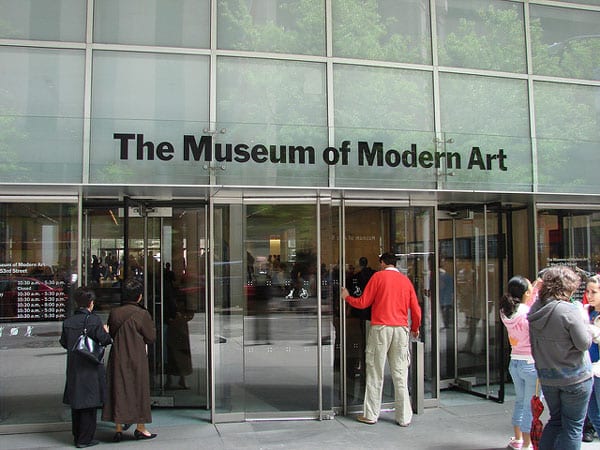
February 5, 2019; New York Times
New York City’s Museum of Modern Art, better known as MoMA, is now entering the final stage of its $400 million overhaul, reports Robin Pogrebin in the New York Times. As NPQ readers will recall, MoMA’s expansion plans were the backdrop for a management-labor dispute this past year, ultimately settled when the parties reached a 5-year contract last August. On Tuesday, the museum detailed its plans and vision.
Pogrebin outlines what the renovated MoMa, slated to reopen on October 22nd after a four-month shutdown starting June 15th, will look like. (A satellite museum, MoMA PS1, in the Long Island City neighborhood of Queens will stay open while the Manhattan museum undergoes renovation). As Pogrebin explains, the renovation is providing the museum an opportunity to “rethink the way that the story of modern and contemporary art is presented to the public.”
After MoMA reopens, the museum will move its opening time a half-hour earlier to 10 am and will stay open until 9 pm on the first Thursday of each month. The new museum will add 40,000 square feet of exhibition space, which MoMa intends to use to highlight “works by women, [Latinxs], Asians, African Americans and other overlooked artists.” A second major shift is abandoning the “discipline-based display system” that the museum has used since it opened its present building in 1939. Instead, the museum will mix art forms, “juxtaposing painting, sculpture, architecture, design, photography, performance, film and works on paper.”
The museum has also pledged to rotate art in its galleries every six to nine months, which should help MoMA display artworks that have often remained hidden from public view.
“The new regular rotation of art,” notes Pogrebin, “means that 30 percent of the galleries will have changed in one year and the entire gallery space will have been re-choreographed by 2022.”
Sign up for our free newsletters
Subscribe to NPQ's newsletters to have our top stories delivered directly to your inbox.
By signing up, you agree to our privacy policy and terms of use, and to receive messages from NPQ and our partners.
Classic MoMA paintings such as Picasso’s Les Demoiselles d’Avignon and van Gogh’s The Starry Night will not disappear, of course. But the new MoMA will also feature less famous artists. Pogrebin herself identifies Okwui Okpokwasili, an Igbo-Nigerian-American artist, performer, and choreographer, as one artist who will gain greater exposure.
Leon Black, who chairs MoMA’s board and is a major museum donor—he and his wife Debra announced a $40 million donation last year—concedes that MoMA has often failed to feature women artists and artists of color and has favored the Global North. The renovated museum, Black tells Pogrebin, aims to reflect “the reality of the multicultural society we all live in.”
Glenn Lowry, who directs the museum, tells Pogrebin, “A new generation of curators is discovering the richness of what is in our collection, and there is great work being made around the world that we need to pay attention to. It means that the usual gets supplanted now by the unexpected.”
Part of this new vision involves new partnerships. For instance, Pogrebin reports MoMA is partnering with the Studio Museum in Harlem to enable that museum to display some of its artworks while it undergoes construction on its own building. The first exhibition at the so-called “Studio Museum at MoMA” will feature the Kenyan-born artist Michael Armitage.
The renovated MoMA will also include two new spaces that will enable museumgoers to interact with art in new ways. One of these is a two-story studio, which will be used for live and experimental programming. The studio space will showcase “performance, dance, music, moving image, and sound works,” writes Pogrebin. The other will house what the museum has labeled the “The Platform.” This, notes MoMA, “will be an experimental, creative space to explore ideas, questions, and art processes that arise from MoMA’s collection. Visitors can drop in to make art, join facilitated conversations, and participate in programs that connect people more deeply with art and each other.”
The idea, Lowry tells Pogrebin, is to enable the museum visitor to “move back and forth from looking at art to talking about art to thinking about art.”—Steve Dubb













